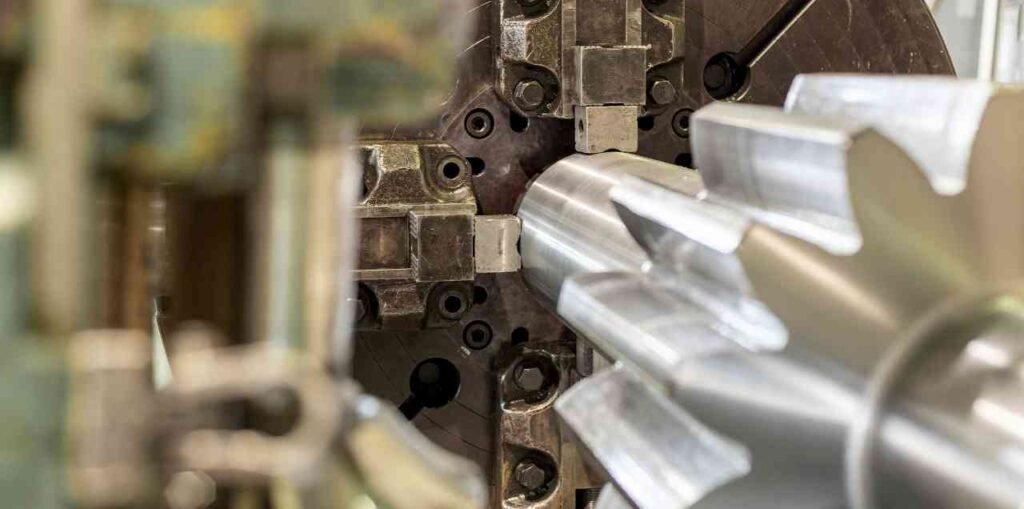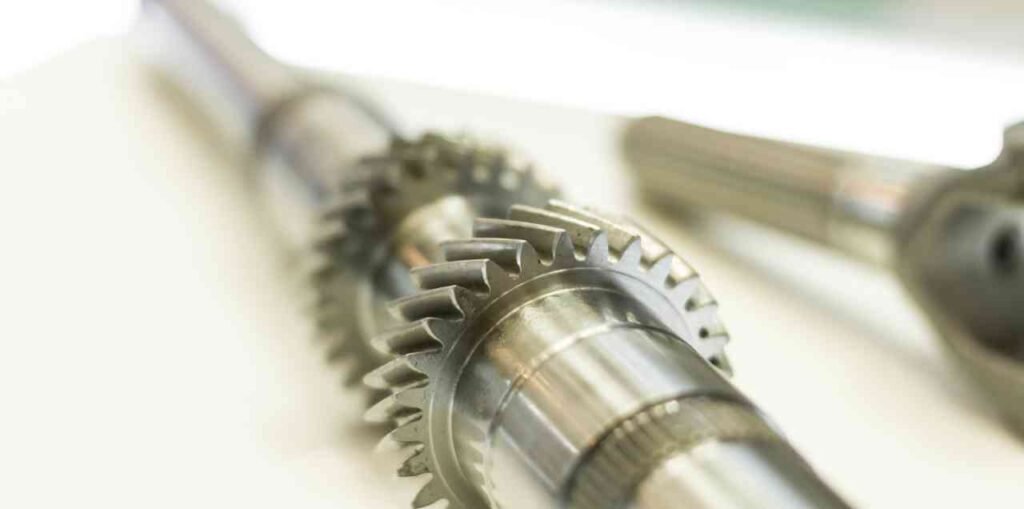Address
The Lake District, Pune 411048, MH - India
Work Hours
Monday to Friday: 9:30AM - 7PM
Saturday: 10AM - 2PM


In the vast and intricate world of metalworking, one process that has been gaining traction for its efficiency and effectiveness is cold forming. But what exactly is cold forming? This method, also known as cold form metal processing, involves shaping metal materials into desired forms at room temperature. Unlike traditional methods that apply heat to soften metals, cold forming manipulates the metal’s plasticity to achieve the desired shape, maintaining the integrity and enhancing the strength of the material. This introductory guide aims to shed light on cold forming, exploring its processes, advantages, applications, and much more.
At its core, CF stands apart from other metalworking processes by eschewing the application of heat to alter metal shapes. Instead, it leverages immense pressure and force to manipulate the material into predetermined dimensions and forms. This method is applicable across a variety of metals, from aluminum and steel to copper, showcasing its versatility. The distinct advantage of cold forming is its ability to maintain the original properties of the metal while enhancing its strength and durability through the process. This is primarily due to the work-hardening phenomenon, where metals become stronger as they are deformed under high pressure, without the risk of altering their intrinsic characteristics through heating.
This technique is adept at generating components with exceptional surface finishes and remarkably precise dimensions, a testament to its precision engineering capabilities. Since the process occurs at or near room temperature, it avoids the grain growth common in heat-based methods, ensuring that the material’s micro-structure remains intact and uniform. This intrinsic characteristic of CF makes it ideal for producing high-quality parts that require minimal finishing work, thereby streamlining manufacturing workflows.
Furthermore, the CF process is not limited to a single technique but encompasses a variety of methods such as rolling, pressing, and extrusion. Each technique is chosen based on the specific requirements of the project, including the type of metal being worked, the desired final shape, and the production volume. By selecting the appropriate method, manufacturers can effectively and efficiently achieve the desired outcomes, making cold forming a flexible and indispensable tool in the realm of metal fabrication.

The CF process utilizes a variety of techniques to mold metal materials into their desired configurations. Among these methods, cold roll forming stands out for its efficiency in producing elongated products with consistent cross-sections. This specific technique involves sequentially passing a metal strip through sets of rollers, each set incrementally bending the metal until the targeted shape is achieved. It’s particularly favored for its ability to manufacture products like beams and rails with uniformity and precision.
Other prevalent CF techniques include extrusion and pressing, which are pivotal in crafting discrete parts. In the extrusion process, metal is forced under high pressure through a die, taking on its intricate shapes, which is ideal for creating components with complex profiles. Similarly, cold pressing shapes metal parts by applying concentrated force without heating, suitable for items requiring precise dimensional tolerance and high structural integrity.
In addition, the cold heading process, a subset of cold forming, specializes in producing fasteners and similar small components by compressing a metal blank into a predefined die. This method is highly efficient for mass production of parts with minimal material wastage.
Each of these techniques exemplifies the versatility and adaptability of CF, allowing for a wide range of shapes and sizes to be produced with high precision and strength. The choice of method depends on the specific requirements of the part being manufactured, including its size, complexity, and the type of metal used. By selecting the most appropriate cold forming technique, manufacturers can optimize production efficiency, reduce costs, and achieve high-quality outcomes that meet stringent industry standards.
Choosing the CF process over conventional hot working techniques presents a range of significant benefits that cater to both the efficiency and sustainability of manufacturing operations. One of the primary advantages of cold forming is the marked decrease in energy requirements. Since the process operates without the need to heat the material, it consumes considerably less energy, leading to reduced operational costs. This aspect not only lowers the environmental footprint of manufacturing but also supports industries in meeting green manufacturing standards.
Additionally, parts produced through CF exhibit enhanced strength and precision. This is attributed to the work-hardening effect inherent in the CF process, which inherently strengthens the material as it is shaped. Such enhanced mechanical properties are critical for components that must endure high stresses in their application environments. Moreover, the dimensional tolerances achievable with cold forming are notably tighter compared to those produced by heat-dependent methods. This precision is crucial for manufacturing components that require strict adherence to dimensional specifications.
Another advantage lies in the production speed and efficiency. CF allows for higher throughput rates due to the elimination of heating and cooling cycles, making it possible to produce a greater volume of parts within the same time-frame as compared to traditional methods. This increase in productivity is further complemented by the process’s ability to minimize material waste. By shaping parts through deformation rather than material removal, cold forming maximizes the use of raw materials, contributing to cost savings and waste reduction.
These combined advantages underline why CF is an increasingly preferred choice in the metalworking industry, offering a harmonious blend of economic, environmental, and material benefits.

Cold forming’s application reaches far and wide, reflecting its adaptability and efficiency in various industry sectors. In the automotive realm, this process is indispensable for crafting parts that demand robustness and precision, such as fasteners, gears, and shafts. These components benefit from the enhanced strength and tighter tolerances that cold forming delivers, ensuring reliability and performance in high-stress environments.
The construction industry also leans heavily on cold forming, particularly for producing steel frames, roofing panels, and other essential structural elements. The method’s ability to create long, consistent sections makes it ideal for these applications, offering stability and durability to buildings and infrastructures.
Beyond these sectors, cold forming finds a place in aerospace, where the demand for high-quality, durable parts is paramount. Aerospace components often require materials that can withstand extreme conditions, and cold forming meets these needs with its capacity to enhance material strength and maintain precise tolerances.
The medical field benefits from the process as well, utilizing cold-formed parts in surgical instruments, implants, and other devices. The precision and strength imparted by cold forming are critical in applications where failure is not an option.
Additionally, the electronics industry employs cold forming for components requiring high conductivity and corrosion resistance. This includes connectors, terminals, and various other parts that benefit from the superior electrical properties of cold-formed metals.
Each of these sectors showcases the versatility and effectiveness of cold forming, making it a key manufacturing process that supports a wide array of applications. Its ability to meet stringent requirements across different industries underscores the importance and widespread reliance on this metalworking method.
Certain materials stand out for their exceptional compatibility with the cold forming process, making them preferred choices for manufacturers seeking to leverage this technique’s benefits. Aluminum is highly favored for cold forming due to its inherent malleability and lightness, allowing for the easy creation of parts without compromising structural integrity. This material is particularly beneficial in industries where weight reduction is crucial, such as in aerospace and automotive manufacturing.
Steel, renowned for its robustness, is another material widely utilized in CF. Both low-carbon and alloy steels are commonly selected for their balance of strength and ductility, making them adaptable to various cold forming techniques. These steels are pivotal in producing components that demand high durability and resistance to wear and tear, from construction beams to automotive parts.
Copper, along with its alloys, represents a significant portion of materials used in cold forming, especially for applications that require excellent electrical and thermal conductivity. Its resistance to corrosion and ability to maintain integrity over a wide range of temperatures make copper an ideal choice for electrical components, heat exchangers, and similar products that benefit from the unique properties imparted by cold forming.
Each of these materials showcases unique attributes that make them well-suited for cold forming, allowing for the production of parts that meet specific performance criteria. The selection of material directly impacts the efficiency and outcome of the cold forming process, underscoring the importance of choosing the right material for each application.
Despite the multitude of advantages that cold forming brings to metalworking, it’s important to acknowledge certain limitations and obstacles that accompany the process. One of the primary hurdles is the substantial force needed to shape metals at room temperature, which necessitates heavy-duty machinery and specialized tooling.
This requirement can lead to increased initial outlays for equipment and maintenance, potentially impacting the overall cost-efficiency for some manufacturers. Additionally, the nature of cold forming imposes restrictions on the types of metals and alloys that can be effectively processed. Certain materials may exhibit brittleness or excessive hardening when subjected to the intense pressures of cold forming, limiting their suitability for this method.
The complexity of the desired end product also poses a significant challenge. While cold forming excels at producing parts with high precision and tight tolerances, there are constraints regarding the complexity of shapes that can be achieved. Designs featuring intricate details or extreme geometries may prove difficult, if not impossible, to realize through cold forming alone, potentially necessitating supplementary processes that could increase production times and costs.
Another aspect to consider is the scale of production. While cold forming is highly efficient for high-volume runs, the initial setup and tooling adjustments required for each new design can be time-consuming, making it less ideal for short-run or bespoke items. This balance between flexibility, cost, and production scale is a critical consideration for manufacturers deciding on the most appropriate metalworking process for their needs. Despite these challenges, cold forming remains a pivotal technique within the metalworking industry, valued for its ability to produce strong, precise components while minimizing waste and energy consumption.

The trajectory of cold form metal processing is geared towards technological innovation and environmental stewardship. As the industry evolves, significant strides in tooling precision and the development of new, more adaptable materials are expected to push the boundaries of what can be achieved with cold forming. These advancements aim to overcome current limitations, enabling the production of even more complex parts with unparalleled accuracy. This is particularly relevant as the demand for intricate components in sectors like aerospace, automotive, and medical devices continues to rise.
Additionally, the integration of digital technologies and automation in cold forming processes is anticipated to enhance efficiency and scalability. This includes the use of AI and machine learning for predictive maintenance and process optimization, reducing downtime and further improving product quality. The push towards Industry 4.0 technologies reflects a broader trend towards smart manufacturing practices that can adapt in real-time to changing production needs.
Sustainability remains a key driver for innovation in cold form metal processing. As global emphasis on reducing carbon footprints intensifies, cold forming stands out for its low energy consumption and minimal material wastage. Future developments are likely to focus on further reducing environmental impact, including the exploration of renewable energy sources for powering operations and the development of recyclable and Eco-friendly materials suited for cold forming.
In summary, the future of cold form metal processing is marked by a convergence of advanced technologies, sustainability, and the ongoing pursuit of operational excellence. These trends not only promise to expand the capabilities of cold forming but also to solidify its role as a cornerstone of modern manufacturing in a rapidly evolving global market.